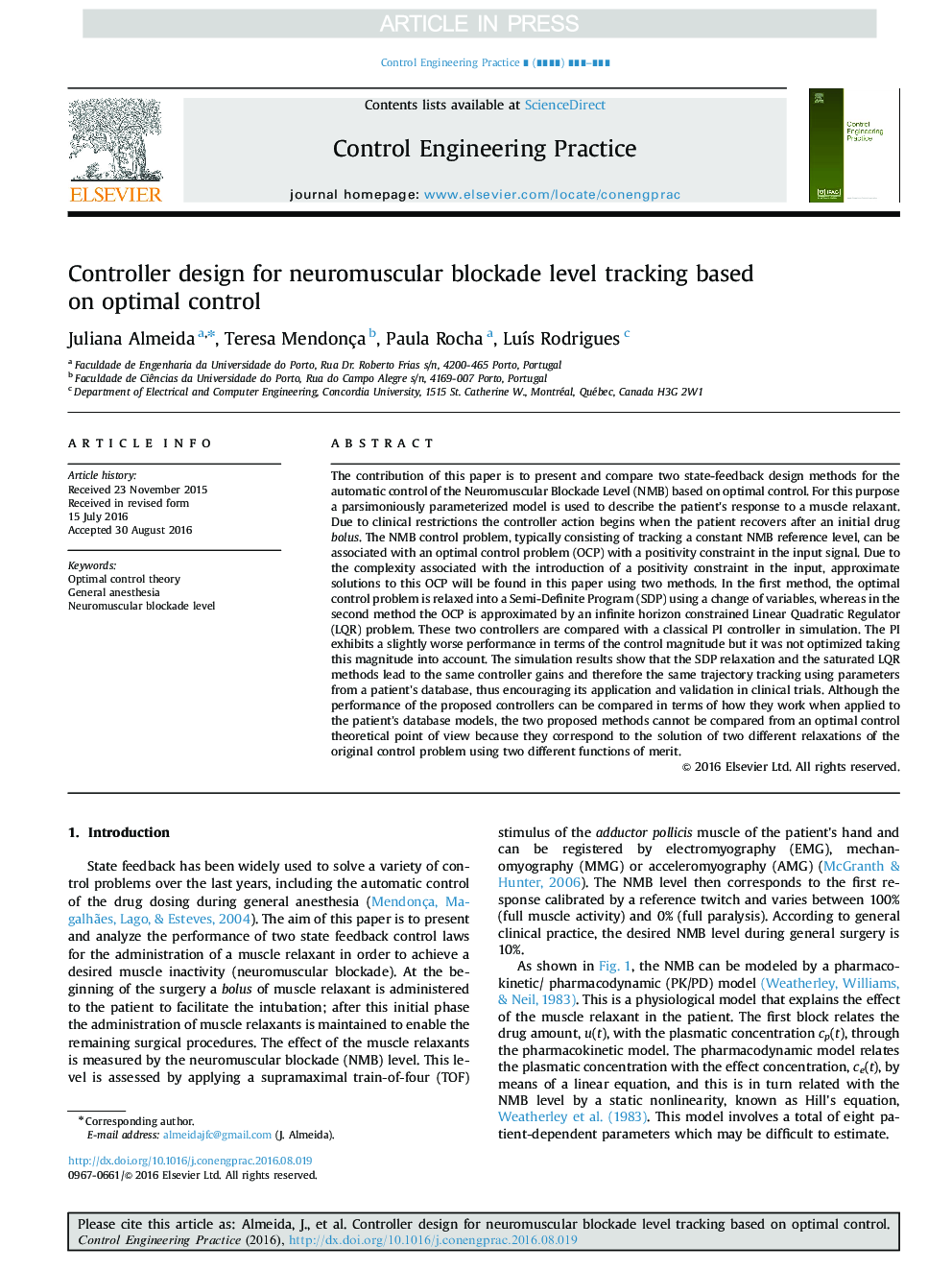| کد مقاله | کد نشریه | سال انتشار | مقاله انگلیسی | نسخه تمام متن |
|---|---|---|---|---|
| 5000434 | 1460687 | 2017 | 8 صفحه PDF | دانلود رایگان |
عنوان انگلیسی مقاله ISI
Controller design for neuromuscular blockade level tracking based on optimal control
ترجمه فارسی عنوان
طراحی کنترل کننده برای ردیابی سطوح انسداد عصبی عضلانی بر اساس کنترل بهینه
دانلود مقاله + سفارش ترجمه
دانلود مقاله ISI انگلیسی
رایگان برای ایرانیان
کلمات کلیدی
نظریه کنترل بهینه، بیهوشی عمومی، سطح بلوک عصبی عضلانی،
موضوعات مرتبط
مهندسی و علوم پایه
سایر رشته های مهندسی
مهندسی هوافضا
چکیده انگلیسی
The contribution of this paper is to present and compare two state-feedback design methods for the automatic control of the Neuromuscular Blockade Level (NMB) based on optimal control. For this purpose a parsimoniously parameterized model is used to describe the patient's response to a muscle relaxant. Due to clinical restrictions the controller action begins when the patient recovers after an initial drug bolus. The NMB control problem, typically consisting of tracking a constant NMB reference level, can be associated with an optimal control problem (OCP) with a positivity constraint in the input signal. Due to the complexity associated with the introduction of a positivity constraint in the input, approximate solutions to this OCP will be found in this paper using two methods. In the first method, the optimal control problem is relaxed into a Semi-Definite Program (SDP) using a change of variables, whereas in the second method the OCP is approximated by an infinite horizon constrained Linear Quadratic Regulator (LQR) problem. These two controllers are compared with a classical PI controller in simulation. The PI exhibits a slightly worse performance in terms of the control magnitude but it was not optimized taking this magnitude into account. The simulation results show that the SDP relaxation and the saturated LQR methods lead to the same controller gains and therefore the same trajectory tracking using parameters from a patient's database, thus encouraging its application and validation in clinical trials. Although the performance of the proposed controllers can be compared in terms of how they work when applied to the patient's database models, the two proposed methods cannot be compared from an optimal control theoretical point of view because they correspond to the solution of two different relaxations of the original control problem using two different functions of merit.
ناشر
Database: Elsevier - ScienceDirect (ساینس دایرکت)
Journal: Control Engineering Practice - Volume 59, February 2017, Pages 151-158
Journal: Control Engineering Practice - Volume 59, February 2017, Pages 151-158
نویسندگان
Juliana Almeida, Teresa Mendonça, Paula Rocha, LuÃs Rodrigues,
